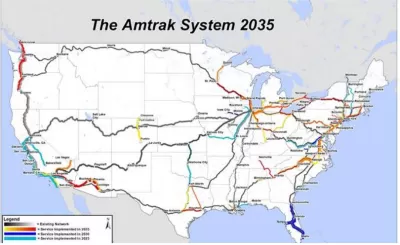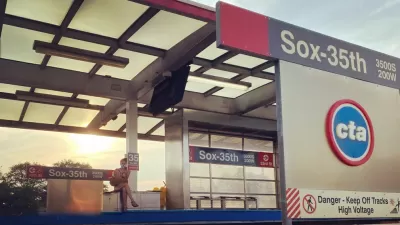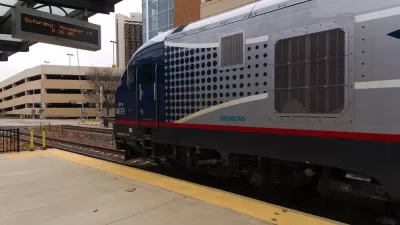Amtrak is presented with the potential for two futures: In one is a $25 billion expansion to update national intercity rail with contemporary patterns of settlement. In the other is fiscal crisis and continued service cuts.

Madalyn Mendoza reports on the diverging potential paths for Amtrak, as exemplified by the example of Texas, where the agency recently reduced Texas Eagle daily service from San Antonio to Chicago to three times a week.
That service reduction was made as Amtrak also makes news for a $25 billion plan to expand service around the country. "Amtrak is also hoping to tap into funds from potential national infrastructure bills such as the INVEST Act, which would provide $28.55 billion for Amtrack over five years," reports Mendoza.
Mendoza relays information presented by Ray Lang, Amtrak’s senior director for national state relations, on Amtrak's expansion plans in September, just a few weeks before the cuts to Texas Eagle service were implemented.
A series of Tweets by Politico reporter Sam Mintz shows the maps of Amtrak's planned expansion maps. Both Mintz and Mendoza suggests that Amtrak would fare well under a Biden presidency, in addition to an expected boon to the Gateway Project connecting New Jersey to New York via the Hudson River.
The Texas Eagle service might not be the last service to get cut as Amtrak deals with the fiscal consequences of the pandemic. As reported in a separate article by Pranshu Verma, Amtrak President and CEO William J. Flynn has been lobbying Congress for $4.9 billion in funding to stave off more cuts (that's $2 billion the rail agency's standard appropriation and $2.8 billion in emergency funding). According to Verma, projected revenue for Amtrak has declined by 53 percent in 2020.
FULL STORY: Amtrak has expansion within the San Antonio-Dallas-Houston triangle 'under review'

Planetizen Federal Action Tracker
A weekly monitor of how Trump’s orders and actions are impacting planners and planning in America.

Maui's Vacation Rental Debate Turns Ugly
Verbal attacks, misinformation campaigns and fistfights plague a high-stakes debate to convert thousands of vacation rentals into long-term housing.

San Francisco Suspends Traffic Calming Amidst Record Deaths
Citing “a challenging fiscal landscape,” the city will cease the program on the heels of 42 traffic deaths, including 24 pedestrians.

Amtrak Rolls Out New Orleans to Alabama “Mardi Gras” Train
The new service will operate morning and evening departures between Mobile and New Orleans.

The Subversive Car-Free Guide to Trump's Great American Road Trip
Car-free ways to access Chicagoland’s best tourist attractions.

San Antonio and Austin are Fusing Into one Massive Megaregion
The region spanning the two central Texas cities is growing fast, posing challenges for local infrastructure and water supplies.
Urban Design for Planners 1: Software Tools
This six-course series explores essential urban design concepts using open source software and equips planners with the tools they need to participate fully in the urban design process.
Planning for Universal Design
Learn the tools for implementing Universal Design in planning regulations.
Heyer Gruel & Associates PA
JM Goldson LLC
Custer County Colorado
City of Camden Redevelopment Agency
City of Astoria
Transportation Research & Education Center (TREC) at Portland State University
Jefferson Parish Government
Camden Redevelopment Agency
City of Claremont





























